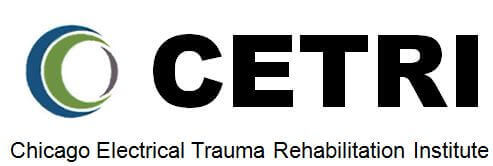Electrical shock ranks among the most devastating of all injuries: outright electrocution is a leading cause of death in some jobs. In contrast, survivors of severe electrical burns may undergo progressive tissue loss, preventing them from returning to work. Historically, it was believed that the main cause of injury in electrical burns was the heating of tissue by the passage of current. CETRI researchers first challenged this assumption by demonstrating that much of the damage resulted from the opening and enlargement of pores in cell membranes due to high-intensity electric fields.
This electroporation process allows important ions to flow freely through the membrane, eventually resulting in cell death. A paper presenting evidence that this can occur even in the absence of thermal damage won the 1995 Lindberg Award of the American Burn Association.
Based on this understanding of electrical burns, CETRI researchers postulated a new type of treatment in which a surfactant already used for medical purposes, Poloxamer 188 (P-188), is administered to injured tissue to seal the membrane pores. The effectiveness of P-188 in this application has now been confirmed in both cell-culture and animal studies, and the U.S. Food and Drug Administration has given approval to begin clinical trials of the treatment.
